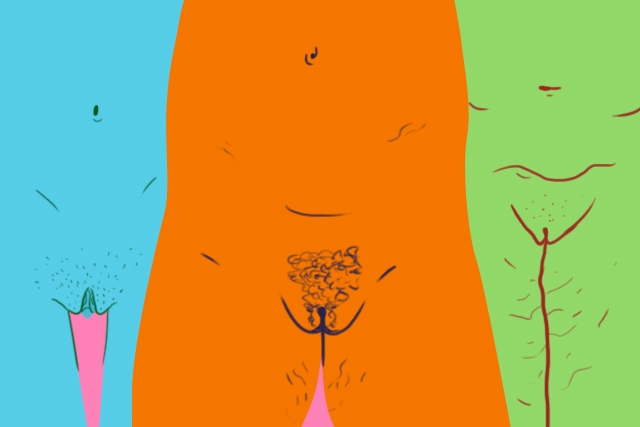
We need to talk about vulvar cancer, one of the rarest cancers that affect women. Each year, there are around 1,300 cases diagnosed in the UK—that’s more than three cases per day. Around six in 10 women survive for at least five years after treatment, but there’s a possibility that the condition will return. Discussions on vulvar health have been unfairly treated as taboo, and so not a lot of women know how to take care of this part of their body. Two-thirds of women can’t even identify their vulva. “If you don’t know about your anatomy, you’re inevitably not going to be able to tell what’s normal and what’s not,” explains Tracie Miles, a gynecological cancer information nurse.
According to Miles, vulvar cancer only affects the skin of a woman’s external genitals. “This includes the lips surrounding the vagina–the two inner lips (the labia minora) and two outer lips (the labia majora), the clitoris and the Bartholin’s glands,” said Miles. There is also a pre-cancerous form of this condition, known as Vulva Intraepithelial Neoplasia (VIN), where cells in the vulva are abnormal.
#checkyourvulva #vulva #knowyourvulva #vulvar #lichensclerosus #vulvalcancer #womenshealth #gynaecancer pic.twitter.com/aYmATgULab
— Vulval Cancer UK Awareness (@VulvalCancerUK) November 26, 2019
Women ages 30 to 50 are the ones often affected. However, this pre-cancerous form does not usually develop into vulvar cancer, but it could if you don’t monitor it well. “Many of the pre-cancerous stages of vulva cancer can be treated if they are caught early enough, so it’s important to be aware of the signs and symptoms of the disease,” said Miles.
These are some symptoms of vulvar cancer:
Changes in the appearance of the vulva skin
It’s important to check your skin for any suspicious changes in color or texture. Irritated skin is also one symptom, along with red, white, or dark patches.
Vulva pain, soreness, and itch
A feeling of discomfort, specifically a prickly feeling, could raise concerns. If you also experience a lasting vulva itch, you should have it checked.
An open sore or growth visible on the vulva skin
An itchy, painful, or bleeding sore is another symptom.
Changes in the color of any mole that you may have on the vulva
Try to detect any changes in shapes or color of your moles (if you have any) on the vulva.
A lump or swelling in the vulva
Although a lump could just be an ingrown hair, it’s still worth having it checked in case it gets worse.
***
It’s not clear what causes vulvar cancer, but factors that increase the risk of the disease are the following: age (the average age of diagnosis is 65), sexually transmitted infections like human papillomavirus (HPV), smoking regularly, and skin conditions like lichen sclerosis. What all of these factors have in common is they could weaken the immune system, thus increasing the risk of vulvar cancer.
The importance of taking action and educating ourselves can’t be stressed enough. Some preventive measures you can take include practicing safe sex, undergoing scheduled tests, getting HPV vaccination, and not smoking. Although there is no standard screening for vulvar cancer, we should still pay close attention to our bodies and visit our doctors regularly for a checkup.
Art by Tricia Guevara
For the latest in culture, fashion, beauty, and celebrities, subscribe to our weekly newsletter here
Follow Preen on Facebook, Instagram, Twitter, YouTube, and Viber
Related stories:
This shop lets you customize your own boob and vulva pots
LOOK: A vulva-inspired bag
Why Are We Calling It Vagina and Not Vulva?
Common vaginal problems you need to be aware of right now
Weird vaginal treatments: Are they really safe?


